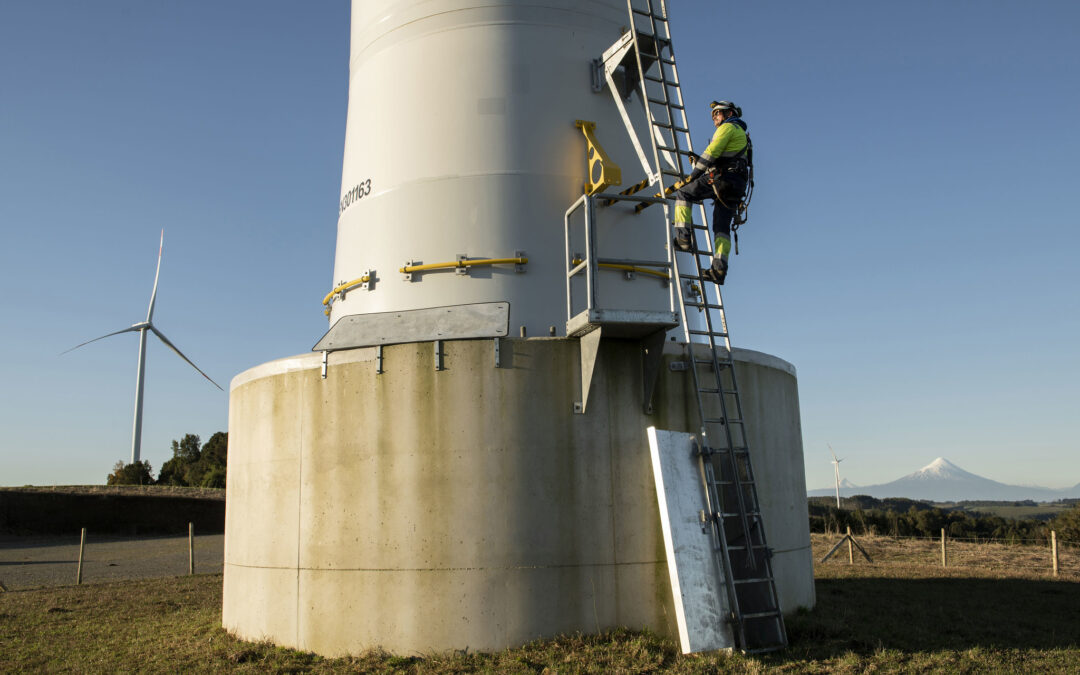Polish coal miners have begun training in operating and servicing wind turbines as part of a programme to support workers leaving the mining sector.
Poland produces around 70% of its electricity from coal – the highest figure in the EU – but has plans to replace that share with renewables and nuclear over the next two decades. The energy transition has, however, caused concern among miners and their unions over what the future holds for them.
The two-week training – initiated and funded by EDF Renewables Polska, the biggest wind energy producer in Poland – is free for miners. The company hopes to help at least dozens of them move into new jobs.
“In the coming years, the wind energy industry will need tens of thousands of employees, while the specialised staff leaving the mining industry seems to be particularly prepared to find employment in the renewable energy sector after appropriate training,” said Alicja Chilińska-Zawadzka, general director at EDF Renewables Polska.
The programme, which started on 16 October, will include a visit to a wind farm and will address issues such as safe working at height, first aid, fire awareness and operation of a wind farm. Participants will take an exam in the operation of suspended platforms and overhead cranes.
The training is accredited by the Global Wind Organisation, a non-profit body founded by wind turbine manufacturers and operators. This means that those who complete the course will be able to work on the installation and servicing of turbines not only in Poland, but all over the world.
In addition to the training, miners will also have the chance to meet employers and have their first job interviews. A second round of training, planned for the first quarter of 2024, is still accepting applicants
Poland generated 40% of its electricity from wind on 31 December, a new record.
The figure would have been higher had the grid operator not ordered wind farms to reduce output as the system was unable to use or store surplus energy being produced https://t.co/BJi5T2CuGs
— Notes from Poland 🇵🇱 (@notesfrompoland) January 6, 2023
“Our aim is not only to provide theoretical knowledge, but also to support you in finding a job in a new industry,” said Artur Ambrożewicz, CEO of Vulcan Training & Consultancy, which is running the programme, quoted by the industry news outlet Offshore Wind Poland.
Poland’s energy transition has caused particular tensions in Silesia, the country’s traditional coal heartlands, where miners have objected to the rapid closure of mines.
Under an agreement with unions, the government announced plans in 2020 to close all Polish coal mines by 2049. However, the rapid rise in energy prices last year prompted the government to delay the coal phaseout and even open new mines.
Earlier this year, the government adopted an energy strategy that aims for three quarters of electricity to be produced from renewables and nuclear by 2040.
Thousands joined protests in Warsaw today organised by miners' and energy workers' unions concerned over their future under the EU's "green transition".
"Yesterday Moscow took our sovereignty; today it is Brussels," read one sign https://t.co/7TDRGBSS4G
— Notes from Poland 🇵🇱 (@notesfrompoland) June 9, 2021
The capacity of onshore wind, which is around 8 GW today, is expected to rise to 14 GW in 2030 and 20 GW by 2040. Offshore wind – which Poland is yet to launch – is anticipated to reach 5.9 GW by 2030 and 18 GW in 2040.
According to the president of the Polish Wind Energy Association (PSEW), Janusz Gajowiecki, in the coming years, the rapidly developing wind sector in Poland will need between 100,000 and 200,000 specialist workers.
“The extensive development of renewable sources – including wind energy – should not be seen as a threat, but as an opportunity for further development,” said Gajowicki, quoted by news service Gospodarka Morska.
Poland’s climate ministry has outlined plans for the country to generate three quarters of its electricity from zero-emissions sources by 2040, with 51% coming from renewables and almost 23% from nuclear https://t.co/CksVqGQXkV
— Notes from Poland 🇵🇱 (@notesfrompoland) April 4, 2023
“This programme [for training miners] shows that the necessary energy transition to green energy does not exclude employees of the ‘old’ energy industry,” he added.
Although wind power development slowed down in the second half of the last decade, it has recently picked up again after the Polish parliament loosened a law prohibiting building wind farms close to residential buildings.
Last month, wind power plants in Poland produced 1,215 GWh of electricity, a figure 11.6% higher than the same period a year earlier, according to data from Polskie Sieci Elektroenergetyczne (PSE), the state transmission system operator.
That meant wind generation accounted for 9.4% of total power production. Coal, however, remained by far the largest source, accounting for 71% of electricity generation.
Construction of Poland’s first offshore wind farm is set to begin.
The 1.2 GW capacity Baltic Power project – a joint venture between Polish state energy giant Orlen and Canada’s Northland Power – will supply around 3% of Poland’s electricity needs https://t.co/RlygocqgfZ
— Notes from Poland 🇵🇱 (@notesfrompoland) October 12, 2023

Notes from Poland is run by a small editorial team and published by an independent, non-profit foundation that is funded through donations from our readers. We cannot do what we do without your support.
Main image credit: International Monetary Fund / Flickr (under CC BY-NC-ND 2.0)

Alicja Ptak is senior editor at Notes from Poland and a multimedia journalist. She previously worked for Reuters.



















